Table of contents :
0849390672_01__SCLZZZZZZZ_V38835035_.jpg……Page 1
9067_fm.pdf……Page 2
The Chemistry and Technology of Petroleum……Page 10
Preface to the Fourth Edition……Page 12
Preface to the First Edition……Page 14
Author……Page 16
Table of Contents……Page 18
Part I: History, Occurence, and Recovery……Page 36
Table of Contents……Page 0
1.1 Historical Perspectives……Page 38
1.2 Modern Perspectives……Page 45
1.3 Definitions and Terminology……Page 47
1.4.1 Petroleum……Page 49
1.4.3 Bitumen……Page 51
1.4.4 Wax……Page 52
1.4.6 Asphaltoid……Page 53
1.4.8 Kerogen……Page 54
1.4.9 Natural Gas……Page 55
1.5.3 Asphalt……Page 57
1.5.4 Tar and Pitch……Page 58
1.6.1 Asphaltenes, Carbenes, and Carboids……Page 59
1.6.2 Resins and Oils……Page 60
1.7 Oil Prices……Page 61
1.7.2 Oil Price History……Page 62
References……Page 63
2.1 Introduction……Page 66
2.2.1 Classification as a Hydrocarbon Resource……Page 68
2.2.2 Classification by Chemical Composition……Page 69
2.2.3 Correlation Index……Page 71
2.2.4 Density……Page 72
2.2.6 Viscosity……Page 73
2.2.8 Viscosity-Gravity Constant……Page 74
2.2.10 Recovery Method……Page 75
2.3 Miscellaneous Systems……Page 76
2.4.1 Identification and Quantification……Page 78
2.4.2 Future……Page 79
References……Page 80
3.1 Introduction……Page 82
3.2.1 Abiogenic Origin……Page 83
3.2.2 Biogenic Origin……Page 85
3.2.2.2 Establishment of Source Beds……Page 87
3.2.2.3 Nature of the Source Material……Page 89
3.2.2.4 Transformation of Organic Matter into Petroleum……Page 92
3.2.2.5 Accumulation in Reservoir Sediments……Page 93
3.2.2.6.1 Thermal Alteration……Page 98
3.2.2.6.2 Deasphalting……Page 100
3.2.3 Differences between the Abiogenic Theory and the Biogenic Theory……Page 101
3.2.4 Relationship of Petroleum Composition and Properties……Page 102
3.3 Occurrence……Page 104
3.3.1 Reserves……Page 105
3.3.2 Conventional Petroleum……Page 108
3.3.3 Natural Gas……Page 109
3.3.5 Bitumen (Extra Heavy Oil)……Page 111
References……Page 114
4.2 Properties……Page 118
4.4 Classification……Page 122
4.5 Isolation……Page 123
4.6.1 Ultimate (Elemental) Analysis……Page 124
4.6.3 Oxidation……Page 125
4.6.4 Thermal Methods……Page 126
4.7 Structural Models……Page 127
4.8 Kerogen Maturation……Page 129
References……Page 131
5.1 Introduction……Page 134
5.2 Exploration……Page 135
5.2.1 Gravity Methods……Page 136
5.2.2 Magnetic Methods……Page 137
5.2.3 Seismic Methods……Page 138
5.2.5 Electromagnetic Methods……Page 139
5.2.7 Borehole Logging……Page 140
5.3.1 Preparing to Drill……Page 141
5.3.2 Drilling Rig……Page 142
5.3.4 Drilling……Page 144
5.4 Well Completion……Page 145
5.5 Recovery……Page 146
5.5.1 Primary Recovery (Natural Methods)……Page 149
5.5.2 Secondary Recovery……Page 152
5.5.3 Enhanced Oil Recovery……Page 154
5.6 Products and Product Quality……Page 168
5.7 Transportation……Page 170
References……Page 175
6.1 Introduction……Page 178
6.2.1 Tar Sand Mining……Page 185
6.2.2 Hot-Water Process……Page 187
6.2.3 Other Processes……Page 190
6.3 Nonmining Methods……Page 192
6.3.1 Steam-Based Processes……Page 194
6.3.2 Combustion Processes……Page 195
6.3.3 Other Processes……Page 198
References……Page 208
Part II: Composition and Properties……Page 210
7.1 Introduction……Page 212
7.2 Ultimate (Elemental) Composition……Page 213
7.3 Chemical Components……Page 214
7.3.1 Hydrocarbon Constituents……Page 216
7.3.1.1 Paraffin Hydrocarbons……Page 217
7.3.1.2 Cycloparaffin Hydrocarbons (Naphthenes)……Page 219
7.3.1.3 Aromatic Hydrocarbons……Page 220
7.3.2 Nonhydrocarbon Constituents……Page 222
7.3.2.1 Sulfur Compounds……Page 223
7.3.2.3 Nitrogen Compounds……Page 225
7.3.2.4 Metallic Constituents……Page 227
7.3.2.5 Porphyrins……Page 228
7.4 Chemical Composition by Distillation……Page 230
7.4.1 Gases and Naphtha……Page 232
7.4.2 Middle Distillates……Page 233
7.4.3 Vacuum Residua (1050°F+)……Page 235
References……Page 236
8.1 Introduction……Page 240
8.2 Distillation……Page 242
8.2.1 Atmospheric Pressure……Page 245
8.2.2 Reduced Pressures……Page 246
8.2.3 Azeotropic and Extractive Distillation……Page 248
8.3 Solvent Treatment……Page 249
8.3.1.1 Influence of Solvent Type……Page 251
8.3.1.3 Influence of Temperature……Page 254
8.3.2 Fractionation……Page 255
8.4.1 Chemical Factors……Page 257
8.4.2.1 General Methods……Page 258
8.4.2.2 ASTM Methods……Page 262
8.5.1 Acid Treatment……Page 264
8.5.2.1 Urea Adduction……Page 266
8.5.2.3 Adduct Composition……Page 267
8.5.2.4 Adduct Structure……Page 268
8.5.2.5 Adduct Properties……Page 269
8.6 Use of the Data……Page 270
References……Page 272
9.1 Introduction……Page 274
9.2 Petroleum Assay……Page 275
9.3.1 Elemental (Ultimate) Analysis……Page 278
9.3.2 Density and Specific Gravity……Page 279
9.3.3 Viscosity……Page 281
9.3.4 Surface and Interfacial Tension……Page 284
9.3.5 Metals Content……Page 286
9.4.1 Volatility……Page 287
9.4.2 Liquefaction and Solidification……Page 290
9.4.3 Carbon Residue……Page 292
9.4.4 Aniline Point……Page 293
9.4.8 Thermal Conductivity……Page 294
9.4.11 Critical Properties……Page 295
9.5.3 Dielectric Strength……Page 296
9.5.5 Static Electrification……Page 297
9.6.1 Refractive Index……Page 298
9.7 Spectroscopic Methods……Page 299
9.7.2 Nuclear Magnetic Resonance……Page 300
9.8.1 Gas Chromatography……Page 301
9.8.2 Simulated Distillation……Page 304
9.8.3 Adsorption Chromatography……Page 305
9.8.4 Gel Permeation Chromatography……Page 306
9.8.5 Ion-Exchange Chromatography……Page 308
9.8.6 High-Performance Liquid Chromatography……Page 309
9.9 Molecular Weight……Page 310
9.10 Use of the Data……Page 311
References……Page 312
10.1 Introduction……Page 316
10.2 Methods for Structural Group Analysis……Page 318
10.2.1.1 Direct Method……Page 321
10.2.1.2 Waterman Ring Analysis……Page 323
10.2.1.4 n.d.M. Method……Page 324
10.2.1.6 Density-Temperature Coefficient Method……Page 325
10.2.1.7 Molecular Weight-Refractive Index Method……Page 326
10.2.1.8 Miscellaneous Methods……Page 327
10.2.2 Spectroscopic Methods……Page 328
10.2.2.1 Infrared Spectroscopy……Page 329
10.2.2.2 Nuclear Magnetic Resonance Spectroscopy……Page 332
10.2.2.3 Mass Spectrometry……Page 336
10.2.2.4 Electron Spin Resonance……Page 338
10.2.2.5 Ultraviolet Spectroscopy……Page 339
10.2.2.6 X-Ray Diffraction……Page 340
10.2.3.1 Nitrogen……Page 342
10.2.3.3 Sulfur……Page 343
10.3 Miscellaneous Methods……Page 344
References……Page 345
11.1 Introduction……Page 350
11.2 Separation……Page 351
11.3 Composition……Page 354
11.4 Molecular Weight……Page 359
11.5 Reactions……Page 363
11.6 Solubility Parameter……Page 368
11.7 Structural Aspects……Page 370
References……Page 376
12.1 Introduction……Page 380
12.2.1 Volatile Fractions……Page 381
12.2.2.2 Resins (Structure)……Page 382
12.2.3.2 Structure……Page 384
12.3 Chemical and physical structure of Petroleum……Page 385
12.4 Stability or Instability of the Crude Oil System……Page 390
12.5 Effects on Recovery and Refining……Page 399
12.5.1 Effects on Recovery Operations……Page 400
12.5.2 Effects on Refining Operations……Page 403
References……Page 405
13.1 Introduction……Page 408
13.2 Instability and Incompatibility in petroleum……Page 412
13.3.1 Elemental Analysis……Page 413
13.3.3 Volatility……Page 414
13.3.5 Asphaltene Content……Page 415
13.3.6 Pour Point……Page 416
13.3.8 Metals (Ash) Content……Page 417
13.4 Methods for Determining Instability and Incompatibility……Page 418
13.5 Effect of Asphaltene Constituents……Page 423
References……Page 426
Part III: Refining……Page 428
14.1 Introduction……Page 430
14.2 Dewatering and Desalting……Page 433
14.3 Early Processes……Page 434
14.4 Distillation……Page 435
14.4.1 Historical Development……Page 436
14.4.2.1 Atmospheric Distillation……Page 437
14.4.2.2 Vacuum Distillation……Page 438
14.5.1 Historical Development……Page 440
14.5.2.2 Visbreaking……Page 443
14.5.2.3 Coking……Page 444
14.6.1 Historical Development……Page 446
14.6.2 Modern Processes……Page 448
14.6.3 Catalysts……Page 449
14.7.2 Modern Processes……Page 450
14.8.1 Historical Development……Page 453
14.8.2.2 Catalytic Reforming……Page 454
14.8.2.3 Catalysts……Page 455
14.9.2 Modern Processes……Page 456
14.9.3 Catalysts……Page 457
14.10.2 Modern Processes……Page 458
14.11.2 Modern Processes……Page 459
14.12.1 Deasphalting……Page 460
14.12.2 Dewaxing……Page 461
14.13 Refining Heavy Feedstocks……Page 462
14.14 Petroleum Products……Page 466
14.15 Petrochemicals……Page 468
References……Page 469
15.1 Introduction……Page 472
15.2.1 Thermal Cracking……Page 474
15.2.2 Catalytic Cracking……Page 475
15.3 Hydrogenation……Page 478
15.3.2 Hydrotreating……Page 479
15.4 Isomerization……Page 480
15.6 Polymerization……Page 481
15.7.1 Thermal Chemistry……Page 482
15.7.2 Hydroconversion Chemistry……Page 491
15.7.3.1 Visbreaking……Page 492
15.7.3.2 Hydroprocessing……Page 495
References……Page 497
16.1 Introduction……Page 500
16.2 Pretreatment……Page 502
16.3 Atmospheric and Vacuum Distillation……Page 503
16.3.1 Atmospheric Distillation……Page 505
16.3.2 Vacuum Distillation……Page 508
16.4.1 Columns……Page 510
16.4.3 Trays……Page 512
16.5.1 Stripping……Page 513
16.5.3 Stabilization and Light End Removal……Page 514
16.5.4 Superfractionation……Page 515
16.5.5 Azeotropic Distillation……Page 516
16.5.6 Extractive Distillation……Page 518
16.5.7 Process Options for Heavy Feedstocks……Page 519
References……Page 520
17.1 Introduction……Page 522
17.2 Early Processes……Page 527
17.3 Commercial Processes……Page 528
17.3.1 Visbreaking……Page 529
17.3.2 Coking Processes……Page 534
17.3.2.1 Delayed Coking……Page 535
17.3.2.2 Fluid Coking……Page 538
17.3.2.3 Flexicoking……Page 540
17.3.3.2 Asphalt Coking Technology (ASCOT) Process……Page 542
17.3.3.3 Comprehensive Heavy Ends Reforming Refinery (Cherry-P) Process……Page 543
17.3.3.4 Decarbonizing……Page 544
17.3.3.6 Eureka Process……Page 545
17.3.3.7 Fluid Thermal Cracking (FTC) Process……Page 546
17.3.3.8 High Conversion Soaker Cracking (HSC) Process……Page 547
17.3.3.12 Shell Thermal Cracking……Page 550
17.3.3.13 Tervahl T Process……Page 552
References……Page 553
18.1 Introduction……Page 556
18.3 Commercial Processes……Page 560
18.3.2.1 Fluid-Bed Catalytic Cracking……Page 561
18.3.2.5 Universal Oil Products (UOP) Fluid-Bed Catalytic Cracking……Page 563
18.3.3.4 Suspensoid Catalytic Cracking……Page 564
18.3.4.1 Asphalt Residual Treating (ART) Process……Page 565
18.3.4.2 Residue Fluid Catalytic Cracking (HOC) Process……Page 566
18.3.4.3 Heavy Oil Treating (HOT) Process……Page 567
18.3.4.5 Reduced Crude Oil Conversion (RCC) Process……Page 568
18.3.4.6 Shell FCC Process……Page 569
18.3.4.7 S&W Fluid Catalytic Cracking Process……Page 571
18.4 Catalysts……Page 572
18.5 Process Parameters……Page 573
18.5.1 Reactor……Page 574
18.5.2 Coking……Page 575
18.5.3 Catalyst Variables……Page 577
18.5.4 Process Variables……Page 578
References……Page 579
19.2 Commercial Processes……Page 582
19.2.1 Deasphalting Process……Page 583
19.2.2 Process Options for Heavy Feedstocks……Page 589
19.2.2.1 Deep Solvent Deasphalting Process……Page 590
19.2.2.2 Demex Process……Page 593
19.2.2.3 MDS Process……Page 594
19.2.2.4 Residuum Oil Supercritical Extraction (ROSE) Process……Page 595
19.2.2.6 Lube Deasphalting……Page 596
19.3 Dewaxing Processes……Page 597
References……Page 602
20.1 Introduction……Page 604
20.2 Process Parameters and Reactors……Page 612
20.2.4 Catalyst Life……Page 613
20.2.5 Feedstock Effects……Page 614
20.2.6.1 Downflow Fixed-Bed Reactor……Page 616
20.2.6.2 Upflow Expanded-Bed Reactor……Page 617
20.3 Commercial Processes……Page 618
20.3.3 Gulf-HDS……Page 619
20.3.4 Hydrofining……Page 620
20.3.9 Process Options for Heavy Feedstocks……Page 622
20.3.9.1 Residuum Desulfurization and Vacuum Residuum Desulfurization Process……Page 623
20.3.9.2 Residfining Process……Page 624
20.4 Catalysts……Page 625
20.5 Biodesulfurization……Page 629
20.6 Gasoline and Diesel Fuel Polishing……Page 630
References……Page 632
21.1 Introduction……Page 634
21.2 Commercial Processes……Page 640
21.2.1.1 Single-Stage and Two-Stage Options……Page 641
21.2.2.2 CANMET Hydrocracking Process……Page 645
21.2.2.3 H-Oil Process……Page 647
21.2.2.5 Hyvahl F Process……Page 649
21.2.2.6 IFP Hydrocracking Process……Page 650
21.2.2.7 Isocracking Process……Page 651
21.2.2.8 LC-Fining Process……Page 652
21.2.2.10 Microcat-RC Process……Page 654
21.2.2.11 Mild Hydrocracking Process……Page 656
21.2.2.12 MRH Process……Page 657
21.2.2.14 Residfining Process……Page 658
21.2.2.16 Tervahl-H Process……Page 659
21.2.2.17 Unicracking Process……Page 660
21.2.2.18 Veba Combi Cracking Process……Page 662
21.3 Catalysts……Page 663
References……Page 670
22.1 Introduction……Page 672
22.2.1 Hydrotreating……Page 675
22.2.2 Hydrocracking……Page 676
22.3 Feedstocks……Page 677
22.4 Process Chemistry……Page 678
22.5 Commercial Processes……Page 680
22.5.1 Heavy Residue Gasification and Combined Cycle Power Generation……Page 681
22.5.4 Hypro Process……Page 682
22.5.5 Pyrolysis Processes……Page 683
22.5.7 Steam-Methane Reforming……Page 684
22.5.9 Synthesis Gas Generation……Page 686
22.5.10 Texaco Gasification (Partial Oxidation) Process……Page 687
22.6.1 Reforming Catalysts……Page 688
22.6.2 Shift Conversion Catalysts……Page 689
22.7 Hydrogen Purification……Page 690
22.7.2 Pressure-Swing Adsorption Units……Page 691
22.8 Hydrogen Management……Page 693
References……Page 694
23.1 Introduction……Page 696
23.2 Reforming……Page 697
23.2.1 Thermal Reforming……Page 699
23.2.2 Catalytic Reforming……Page 700
23.2.2.1.1 Hydroforming……Page 703
23.2.2.1.3 Platforming……Page 704
23.2.2.1.6 Selectoforming……Page 706
23.2.2.3 Fluid-Bed Processes……Page 707
23.3 Isomerization……Page 708
23.3.2 Butomerate Process……Page 710
23.3.7 Penex Process……Page 711
23.4 Alkylation……Page 712
23.4.1 Cascade Sulfuric Acid Alkylation……Page 713
23.4.2 Hydrogen Fluoride Alkylation……Page 714
23.5.1 Thermal Polymerization……Page 715
23.5.3 Bulk Acid Polymerization……Page 716
23.6.1 Reforming Processes……Page 717
23.6.4 Polymerization Processes……Page 718
References……Page 719
24.1 Introduction……Page 720
24.2.1 Caustic Processes……Page 723
24.2.1.5 Lye Treatment……Page 724
24.2.1.8 Sodasol Process……Page 725
24.2.2 Acid Processes……Page 726
24.2.2.2 Sulfuric Acid Treatment……Page 728
24.2.3.3 Bauxite Treatment……Page 729
24.2.3.8 Thermofor Continuous Percolation Process……Page 730
24.2.4.2 Copper Sweetening Process……Page 731
24.2.4.4 Hypochlorite Sweetening Process……Page 732
24.2.5 Solvent Processes……Page 733
24.2.5.1 Deasphalting……Page 734
24.2.5.2 Solvent Refining……Page 735
24.2.5.3 Dewaxing……Page 738
References……Page 741
25.1 Introduction……Page 742
25.1.1 Gas Streams from Crude Oil……Page 743
25.1.2 Gas Streams from Natural Gas……Page 746
25.2 Gas Cleaning……Page 747
25.3 Water Removal……Page 754
25.3.2 Solid Adsorbents……Page 755
25.3.3 Use of Membranes……Page 756
25.4.1 Extraction……Page 757
25.4.3 Fractionation of Natural Gas Liquids……Page 758
25.6 Acid Gas Removal……Page 759
25.8 Fractionation……Page 763
25.9 Claus Process……Page 764
References……Page 766
26.1 Introduction……Page 768
26.2.1 Composition……Page 773
26.2.3 Properties and Uses……Page 774
26.3.1 Composition……Page 777
26.3.2 Manufacture……Page 778
26.3.4 Octane Numbers……Page 781
26.3.5 Additives……Page 783
26.4.1 Composition……Page 785
26.4.2 Manufacture……Page 786
26.4.3 Properties and Uses……Page 788
26.5 Kerosene……Page 789
26.5.2 Manufacture……Page 790
26.6 Fuel Oil……Page 791
26.7 Lubricating Oil……Page 793
26.7.2 Manufacture……Page 794
26.7.2.3 Solvent Refining Processes……Page 795
26.7.2.6 Finishing Processes……Page 796
26.7.2.7 Older Processes……Page 797
26.7.3 Properties and Uses……Page 798
26.8.1 White Oil……Page 799
26.8.2 Insulating Oil……Page 800
26.9 Grease……Page 801
26.9.1 Lime Soap……Page 802
26.9.5 Cold Sett Grease……Page 803
26.10.2 Manufacture……Page 804
26.11.1 Composition……Page 806
26.11.2 Manufacture……Page 807
26.12 Coke……Page 809
26.13 Sulfonic Acids……Page 811
26.15 Product Blending……Page 812
References……Page 813
27.1 Introduction……Page 816
27.2.1 Halogenation……Page 824
27.2.2 Nitration……Page 825
27.2.3 Oxidation……Page 826
27.2.4 Alkylation……Page 827
27.3 Chemicals from Olefins……Page 828
27.3.1 Hydroxylation……Page 829
27.3.3 Polymerization……Page 831
27.4 Chemicals from Aromatics……Page 832
27.6 Chemicals from Natural Gas……Page 834
27.7 Inorganic Petrochemicals……Page 836
27.8 Synthesis Gas……Page 837
References……Page 838
Part IV: Environmental Issues……Page 840
28.1 Introduction……Page 842
28.2 Definitions……Page 844
28.3 Environmental Regulations……Page 846
28.3.3 Safe Drinking Water Act……Page 847
28.3.5 Toxic Substances Control Act……Page 848
28.3.8 Oil Pollution Act……Page 849
28.4 Process Analysis……Page 850
28.4.1 Gaseous Emissions……Page 853
28.4.2 Liquid Effluents……Page 857
28.4.3 Solid Effluents……Page 858
References……Page 859
29.1 Introduction……Page 862
29.2 Process Wastes……Page 865
29.2.1 Desalting……Page 866
29.2.2 Distillation……Page 867
29.2.3 Thermal Cracking and Visbreaking……Page 870
29.2.4 Coking Processes……Page 871
29.2.5 Fluid Catalytic Cracking……Page 873
29.2.6 Hydrocracking and Hydrotreating……Page 874
29.2.7 Catalytic Reforming……Page 877
29.2.8 Alkylation……Page 878
29.2.9 Isomerization……Page 880
29.2.10 Polymerization……Page 881
29.2.11 Deasphalting……Page 882
29.2.12 Dewaxing……Page 883
29.2.13 Gas Processing……Page 884
29.3 Types of Waste……Page 885
29.3.1 Gases and Lower Boiling Constituents……Page 887
29.3.2 Higher Boiling Constituents……Page 889
29.3.3 Wastewater……Page 890
29.4 Waste Toxicity……Page 892
29.5.3 Requirements……Page 893
29.6 Management of Refinery Waste……Page 894
References……Page 895
30.1 Introduction……Page 896
30.2 Petroleum and Petroleum Products……Page 897
30.4 Total Petroleum Hydrocarbons……Page 899
30.4.1 Gas Chromatographic Methods……Page 901
30.4.2 Infrared Spectroscopy Methods……Page 904
30.4.3 Gravimetric Methods……Page 905
30.4.4 Immunoassay Methods……Page 906
30.5 Petroleum Group Analysis……Page 907
30.5.2 Immunoassay……Page 908
30.5.3 Gas Chromatography……Page 909
30.5.4 High-Performance Liquid Chromatography……Page 910
30.5.5 Gas Chromatography-Mass Spectrometry……Page 911
30.7 Assessment of the Methods……Page 912
References……Page 915
SI Metric Conversion Factors (E = Exponent; I.E. E + 03 = 103)……Page 918
Glossary……Page 920
The Chemistry and Technology of Petroleum
Free Download
Direct Download: Coming soon..
Download link:
Category: Technique , Oil and Gas Technologies
Tags: >>Общая технология переработки нефти, Химия и технология нефти и газа, Химия и химическая промышленностьSign in to view hidden content.
Be the first to review “The Chemistry and Technology of Petroleum” Cancel reply
You must be logged in to post a review.
Related products
- Chemistry , Organic Chemistry
Quimica organica. Fundamentos theorio-practicos para el laboratorio
Free Download
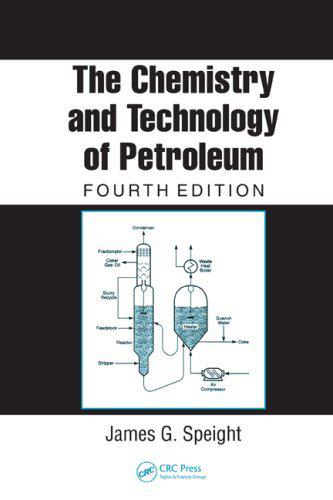
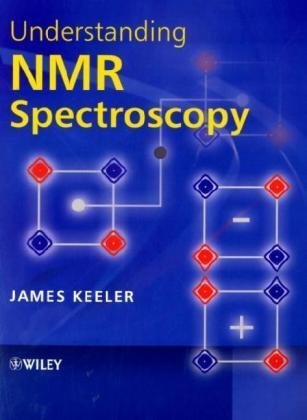
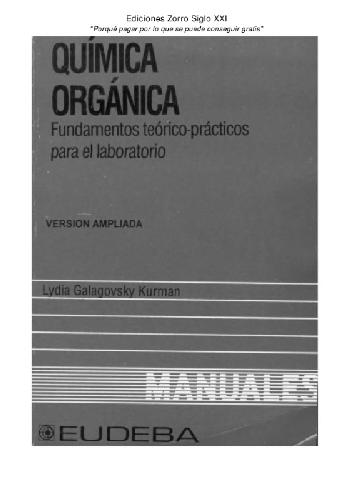
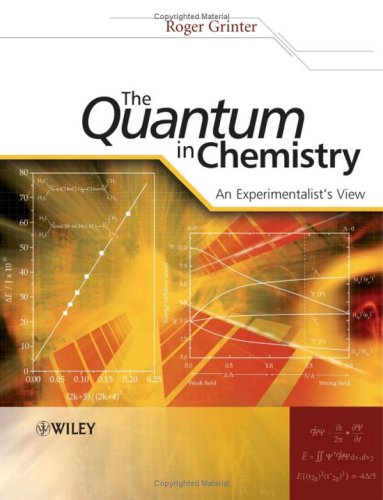

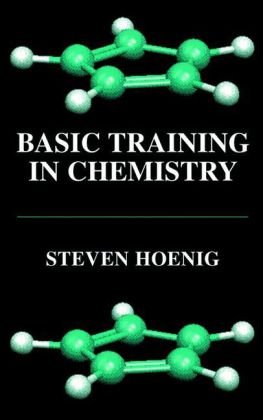
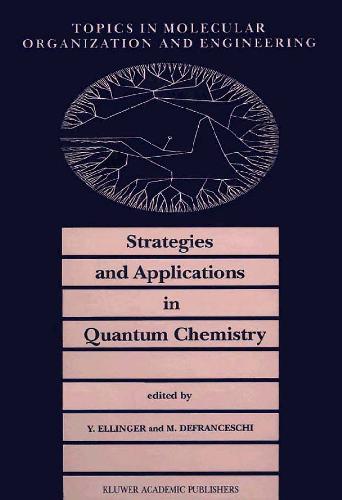
Reviews
There are no reviews yet.